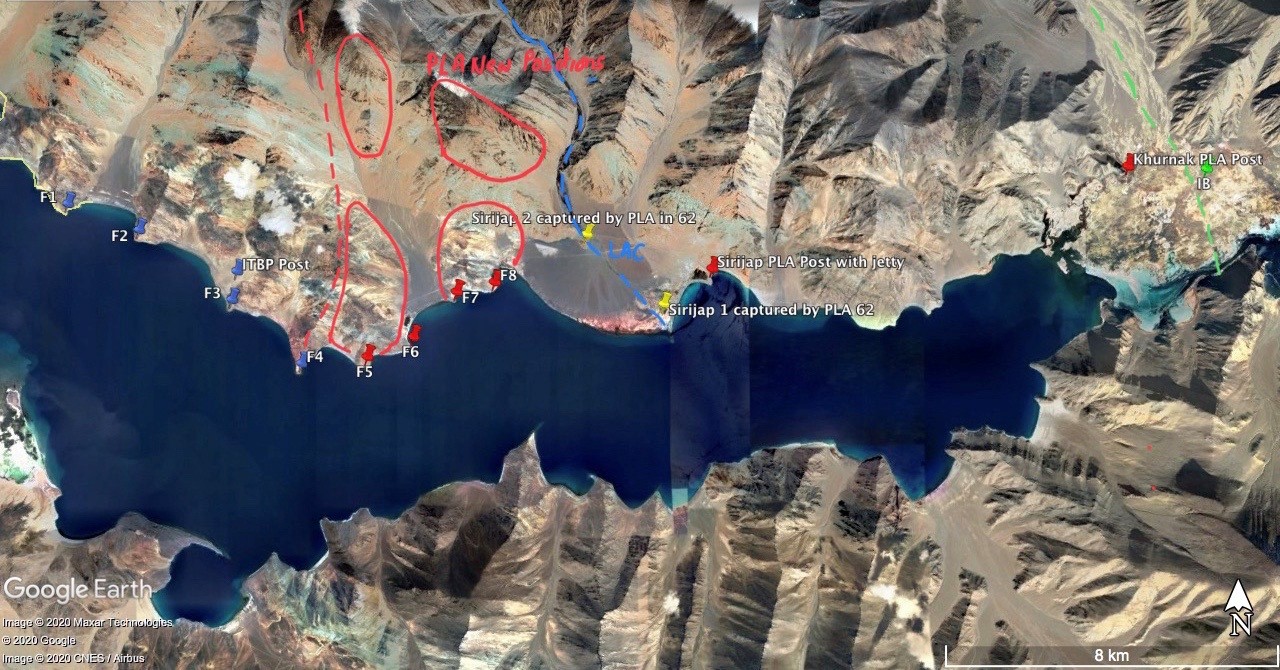
SOURCE: TNN BLOG
Less than a year after the world was on the precipice of a nuclear apocalypse, JFK reached out to Nikita Khrushchev to stop the manic rush to stockpile nukes. In his commencement speech at American University on June 10, 1963, ‘A Strategy of Peace’, he called for nuclear disarmament and peaceful coexistence of a democratic America and a Communist USSR. A 46-year-old Kennedy had witnessed the two most alarming crises during the second year of his presidency: the Cuban Missile Crisis and the India-China War.
However, around eight months before the landmark speech, JFK’s stance on Communism was drastically different—not to forget the Kennedy clan’s deep ties with senator Joseph McCarthy. Kennedy had come out openly in support of New Delhi during the 1962 India-China war with a ballast of American weapons and other supplies for the Army. He wanted India to win.
As the marauding People’s Liberation Army (PLA) continued with its massive assault on the eastern and westerns theatres with an Indian defeat imminent, a panicked Prime Minister Jawaharlal Nehru shot off a second letter to Kennedy requesting immediate deployment of 350 US Air Force combats jets, including two bombers.
Before Kennedy could accede to Nehru’s request, China declared a unilateral ceasefire which, according to Khrushchev, was guided by American and British help to India, and Beijing’s global condemnation for its aggression. The approaching harsh winter was also a reason for the Chinese cessation of hostilities.
That was 58 years ago. The tectonic shift in the Chinese economy under Deng Xiaoping and the military under Xi Jinping has altered the contours of the US-India-China relations to an unimaginable extent since then. Confronting Beijing militarily on India’s behalf if the ongoing Chinese belligerence in eastern Ladakh triggers a war will be a nightmare scenario for Donald Trump or a Joe Biden presidency. With the second-largest economy and the most powerful military after the US, no American president would like to rattle China militarily.
The Indian media’s portrayal of a possible American military intervention, in case, of a war with China every time a senior US official makes statements in India’s support amounts to hyperbole.
When White House chief of staff Mark Meadows told Fox News, after USS Nimitz and USS Ronald Reagan sailed to the South China Sea (SCS), that the US “military might stands strong and will continue to stand strong, whether it’s in relationship to a conflict between India and China or anywhere else”, most media outlets misconstrued it as ‘military intervention’. Standing strong behind someone militarily doesn’t necessarily mean intervention; it could be logistical help and intel sharing too.
Deployment of US aircraft carriers in SCS is as routine as deploying the three bombers B-52 Stratofortress, B-2 Spirit and B-1 Lancer to the American naval and air force bases on Guam (Western Pacific) and Diego Garcia (Indian Ocean). In fact, Republican senator Tom Cotton, who has combat experience in Iraq and Afghanistan, said on Fox News that the two carriers aimed to neutralise any Chinese attack on Taiwan or other countries in the region. “That’s one of the reasons why we have those aircraft carrier groups in the South China Sea,” he said.
To expect military intervention in a war with China from an American president whose desperate re-election bid and striking trade deals prevail over geopolitics, strategic affairs and relation with allies is like getting blood from a stone. Even Biden, who opposed Trump’s levy of tariffs on China, doesn’t advocate direct military and economic confrontation with Beijing.
One of Trump’s campaign pledges in 2016 was to withdraw US soldiers from overseas conflicts and war zones and not support further military misadventures like Iraq and Afghanistan. Neither he nor Biden would allow American boots to land in the freezing barren lands of Ladakh at 13,000-15,000 feet and create another quagmire. Rather, the US finds countering China in SCS, which, according to its Energy Information Agency estimates, holds about 190 trillion cubic feet of natural gas and 11 billion barrels of oil in proved and probable reserves, more sensible.
There are three main reasons for which the US will not provide direct military support to India in a war against China.
US bases vulnerable to Chinese missiles
Any form of direct military intervention by the US on India’s behalf would be in the form of deployment of either of its three bombers—in all probability, the stealth B-2. China will immediately respond with a volley of missile attacks on American bases in the Western Pacific and the Indian Ocean. With the biggest and the most varied stockpile of land-based, cruise and anti-ship missiles, every US base in Western Pacific and the Indian Ocean is within striking range of Chinese missiles. US estimates that China has more than 2,000 such missiles.
According to former Commander of the US Indo-Pacific Command Admiral (retired) Harry Harris, China has the biggest and most diverse arsenal of missiles that threatens American ships in the Western Pacific. A report by The Times in which US defence sources cite Pentagon war games says America will lose a war against China in the Pacific or while defending Taiwan with all its bases, including Guam, under threat by Chinese ballistic and anti-ship missiles. Even from mainland China, its longest-range inter-continental ballistic missile Dongfeng (DF)-41, with a range of around 15,000 km, could strike not only Diego Garcia but the whole of the US. According to Centre for Strategic and International Studies, the DF-41, which can carry 10 independently targeted nuclear warheads, could theoretically hit the US in 30 minutes.
The DF-16 short-range ballistic missile can hit Taiwan, in case, the US wants to reuse the Ching Chuan Kang Air Base, or the Chiashan Air Force Base to neutralise a Chinese attack.
Similarly, US bases in Japan are within the striking range of medium-range ballistic missile DF-21 and CJ-10 land-based cruise missile. The most important air base, at Kadena, houses the 353rd Special Operations Group, US Patriot missiles and F-15s; the Misawa base has F16s, P-8A Poseidons and EA-18G Growlers; the Yokota base C-130J Super Hercules; the Yokusuka Naval Base provides logistics and operational support to USS Ronald Reagan and the Destroyer Squadron 15; the Iwakumi Marine Corps base F-35Bs, F/A-18Ds and F/A18Es; and the Sasebo Naval Base too provides logistics support to the United States Pacific Fleet.
In August, a day after a US U-2 spy plane allegedly entered a no-fly zone in SCS, China fired the DF-21’s ‘carrier killer’ version, called DF-21D, as a warning to USS Nimitz and USS Ronald Reagan. China also fired the intermediate-range ballistic missile DF-26, indirectly warning the US that its Joint Region Marianas military command, on Guam, could be attacked.
One of the reasons the US ended the 2004 Continuous Bomber Presence programme on Guam is the threat of Chinese missiles to the B-2s. The presence of the costliest aircraft in the USAF inventory, which has often hovered over the South China Sea and the Korean Peninsula as a mark of support to its allies and deterrence to China and North Korea, is globally known and could have made them vulnerable to the ‘Guam Killer’, the DF-26.
In its report titled, ‘Military and Security Developments Involving the People’s Republic of China 2020’, the US department of defence (DoD) says: “The multirole DF-26 is designed to rapidly swap conventional and nuclear warheads and is capable of conducting precision strikes in the Western Pacific, the Indian Ocean, and the South China Sea from mainland China.” Besides, the PLA Air Force’s (PLAAF) H-6K bomber, with a combat radius of 3,700 km, can fire the Changjian-20 air-launched cruise missile at US bases in Guam.
According to the Rand Corporation, Chinese missile attacks against US air bases would have “significant spillover effects into the air superiority contest [with the US]”.
The missile imbalance and threat from China prompted Trump to pull out from the Cold War-era 1987 Intermediate-Range Nuclear Forces Treaty, which banned nuclear and non-nuclear missiles with ranges of 500-5,500 km.
China has strategically stationed its aircraft carriers and attack submarines to strike US bases in SCS. The Northern Theatre Command Navy has one aircraft carrier, four nuclear-powered attack submarines and 14 diesel-powered attack submarines. While the Southern Theatre Command Navy has one aircraft carrier, four nuclear-powered ballistic missile submarines and 14 diesel-powered attack submarines.
The DoD report further mentions how Beijing is “developing capabilities and operational concepts to conduct offensive operations within the Second Island Chain, in the Pacific and Indian Oceans”. The Chinese logistics and infrastructure ambition is not constricted to Djibouti; the PLA is considering setting up bases in Pakistan, Sri Lanka, Myanmar, Thailand, Singapore, Indonesia, the UAE, Kenya, Seychelles, Tanzania, Angola and Tajikistan to increase its military footprint.
US-China economic ties
The massive volume and value of US-China trade and the economic inter-dependency of the two nations will play a crucial role in dissuading America from a Ladakh misadventure. China was America’s third largest trading partner in 2019 with $558.9 billion worth of bilateral trade while India was ninth with $92.1 billion. According to the US Census Bureau, the value of US trade with China in 2018 was $659 billion while it was only $87 billion with India.
Trump had requested Xi at the G20 Osaka summit last year to purchase more US farm products to help him win agricultural states—like California, Iowa, Wisconsin and North Carolina—and get re-elected, according to former national security adviser John Bolton’s book The Room Where It Happened: A White House Memoir.
In January, China agreed to purchase additional US goods and services worth $200 billion on top of 2017 export figures under Phase 1 of the Trump-Xi trade deal.
In 2019, the US exported farm products valued at $13.8 billion to China, up from $9.1 billion in 2018, according to the US Department of Agriculture. China was the third-largest market for US agricultural exports like soybeans, pork and its products and beef and its products. In the first six months of 2020, China had bought $7.27 billion worth of US farm goods as against the promised $36.5 under Phase 1 of the trade deal.
US dilemma on China
Considering the Chinese dominance in SCS, East China Sea and Yellow Sea—where even helping Taiwan is a risky gamble for the US—and Beijing’s military and economic might, successive American administrations have preferred only wars of words to a real war.
Unlike the intergovernmental military alliance of NATO, the members of Quad—which lacks a mutual and collective defence pact—won’t support India against a war with China in Ladakh despite the increasing worries of US, Japan and Australia against Chinese dominance in the Indo-Pacific.
Though the US policy believes in dealing with China from a position of strength, Washington has always resisted from provoking Beijing militarily and instead tried to defuse tensions. The DoD report confirms this guiding principle: “DoD engagements with China are limited and focussed on reducing risk and preventing misunderstanding in times of increased tension. Defence contacts and exchanges with China seek to build the structures and habits necessary to prevent, defuse, and manage crises.”
Therefore, when the US itself believes in “pursuit of a constructive results-oriented relationship with China” and considers it an important part of its “strategy in the Indo-Pacific region”, the Narendra Modi government should not expect a Kennedy-like intervention either from Trump or Biden in a war against China.






